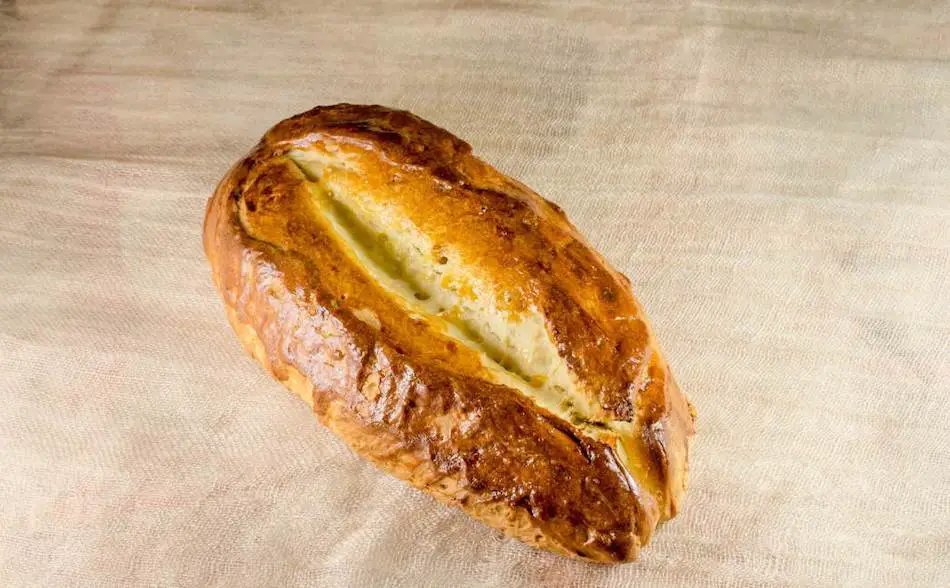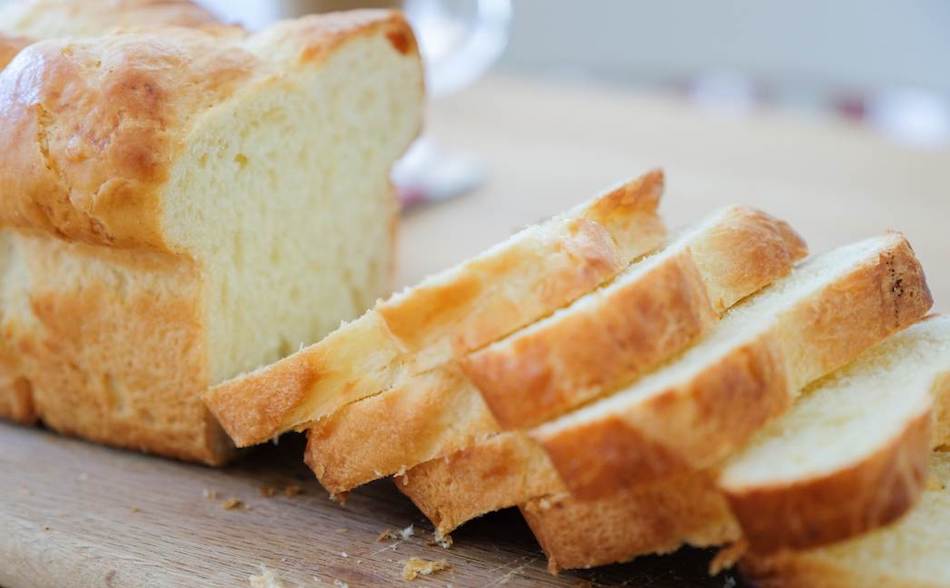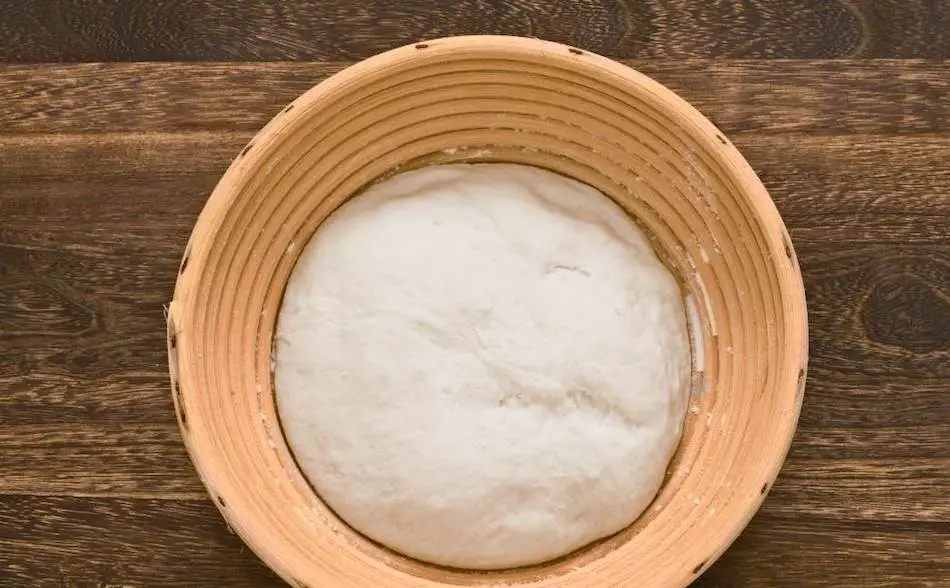
Sunken brioche is a common problem that many bakers face, but with the right knowledge and techniques, it can easily be avoided. The secret to perfect, fluffy brioche lies in understanding the causes of sunken loaves and taking the necessary steps to prevent them. From the role of yeast in the fermentation process to the importance of proper proofing and baking techniques, this article will provide a comprehensive guide to achieving the perfect rise in your brioche every time. So, get ready to impress your friends and family with your delicious, fluffy brioche creations.
Sunken brioche is a baking problem that occurs when the dough of the bread collapses during baking. This can happen due to a variety of reasons, including the use of too much yeast, which can lead to an overactive fermentation process and cause the dough to rise too quickly and then collapse. Another common cause is underproofing, which occurs when the dough is not given enough time to rise before baking. This can lead to a lack of structure in the dough and result in a sunken loaf. To avoid these problems, bakers should use the correct amount of yeast, properly proof the dough, and use the right baking techniques.
Key Points
- Sunken brioche is a common problem caused by using too much yeast and underproofing.
- To prevent sunken brioche, use the correct amount of yeast and properly proof the dough.
- To fix sunken brioche, slice the loaf and fill it with a sweet or savory filling, make french toast or bread pudding, or toast the bread and spread butter over it.
- Yeast plays a critical role in the fermentation process of brioche, too much yeast can cause overfermentation and a sunken loaf.
- To overcome the challenges of sunken brioche, understand the causes and take steps to prevent them, such as using the correct amount of yeast and proper proofing and baking techniques.
- To achieve the perfect rise in brioche, pay attention to the fermentation process, use the correct amount of yeast, keep the dough at the right temperature and give it enough time to rise.
- Common mistakes in baking brioche include underproofing and over-mixing the dough, to avoid these mistakes pay attention to the fermentation process and give the dough enough time to rise.
- To understand the science behind sunken brioche, it’s essential to understand the role of yeast and how it ferments the sugars in the dough.
Understanding the Causes of Sunken Brioche
Sunken brioche is a common problem that many bakers face, and understanding the causes is key to preventing it. One of the main causes is the use of too much yeast, which can lead to an overactive fermentation process and cause the dough to rise too quickly and then collapse. Another common cause is underproofing, which occurs when the dough is not given enough time to rise before baking. This can lead to a lack of structure in the dough and result in a sunken loaf.
Preventing Sunken Brioche: Tips and Tricks
Preventing sunken brioche is all about understanding the causes and taking the necessary steps to avoid them. One of the most important things to keep in mind is to use the correct amount of yeast, as too much can lead to overfermentation and a sunken loaf. Another important step is to properly proof the dough, giving it enough time to rise before baking. This will ensure that the dough has the structure it needs to maintain its shape during baking.
Fixing Sunken Brioche: Step-by-Step Guide
If you’re faced with a sunken loaf of brioche, don’t despair. There are a few things you can do to fix it. One option is to slice off the top of the loaf and fill it with a sweet or savory filling. Another option is to slice the loaf and make french toast or bread pudding. If the sunken part is not too deep, you can also try toasting the bread and spreading butter over it to make it more palatable.
The Role of Yeast in Sunken Brioche
Yeast plays a critical role in the baking of brioche, and it can also be a major contributor to sunken loaves. Yeast is a living organism that ferments the sugars in the dough, which produces carbon dioxide and alcohol. This fermentation process causes the dough to rise. However, if there is too much yeast, the fermentation process will be too active, and this can cause the dough to rise too quickly and then collapse.

Overcoming the Challenges of Sunken Brioche
Overcoming the Challenges of Sunken Brioche” – Baking brioche can be a challenging task, and dealing with sunken loaves can be frustrating. But with the right approach, you can overcome these challenges and achieve the perfect rise. It’s all about understanding the causes and taking the necessary steps to prevent them. This includes using the correct amount of yeast, properly proofing the dough, and using the right baking techniques. With a little patience and practice, you’ll be able to overcome the challenges of sunken brioche and create beautiful and delicious loaves every time.
Sunken Brioche: How to Achieve the Perfect Rise
Achieving the perfect rise in brioche can be a tricky task, but with a little know-how, it’s definitely achievable. The key to a perfect rise is to pay attention to the fermentation process. This means using the correct amount of yeast, keeping the dough at the right temperature, and giving it enough time to rise. Additionally, it’s essential to use the right baking techniques, such as using a Dutch oven to create a humid environment, which will help the dough to rise evenly. With a bit of practice and patience, you’ll be able to achieve that perfect, light and fluffy rise in your brioche every time.
Common Brioche Mistakes and How to Avoid Them
Sunken brioche is a common problem that many bakers face, and it’s often caused by simple mistakes. One of the most common mistakes is underproofing the dough, which occurs when the dough is not given enough time to rise before baking. This can lead to a lack of structure in the dough and result in a sunken loaf. Another mistake is over-mixing the dough, which can also lead to a lack of structure and a sunken loaf. To avoid these mistakes, it’s essential to pay attention to the fermentation process, use the correct amount of yeast, and give the dough enough time to rise.
Understanding the Biology
To understand the science behind sunken brioche, it’s essential to understand the role of yeast. Yeast is a living organism that ferments the sugars in the dough, which produces carbon dioxide and alcohol. This fermentation process causes the dough to rise. However, if there is too much yeast or the dough is not given enough time to rise, the fermentation process can become too active, which can lead to a sunken loaf. Additionally, it’s important to understand the role of gluten, the protein found in wheat flour, which gives the dough structure and helps it to maintain its shape during baking.
Sinking Brioche: A Beginner’s Guide to Prevention and Fixing
For those new to baking, sunken brioche can be a frustrating problem to deal with. But with a little guidance, it’s possible to prevent and fix it. The key is to pay attention to the fermentation process, using the correct amount of yeast and giving the dough enough time to rise. Additionally, it’s essential to use the right baking techniques, such as using a Dutch oven to create a humid environment, which will help the dough to rise evenly. And if all else fails, don’t be afraid to get creative and use the sunken loaf in other ways, such as making bread pudding or French toast.
Sunken Brioche: How to Identify and Fix the Problem
Identifying a sunken brioche is relatively easy, as the loaf will have a flattened top and a dense texture. To fix the problem, it’s essential to understand the causes, which can range from using too much yeast to underproofing the dough. One option to fix a sunken loaf is to slice off the top and fill it with a sweet or savory filling. Another option is to slice the loaf and make french toast or bread pudding. If the sunken part is not too deep, you can also try toasting the bread and spreading butter over it to make it more palatable.
The Art of Fixing Sinking Brioche
Fixing sunken brioche is not just about science, it’s also an art. It’s about understanding the causes of the problem and coming up with creative solutions to fix it. One option is to slice off the top of the loaf and fill it with a sweet or savory filling. Another option is to slice the loaf and make french toast or bread pudding. And if the sunken part is not too deep, you can also try toasting the bread and spreading butter over it to make it more palatable. The key to fixing sunken brioche is to not be afraid to get creative and think outside the box.
Sunken Brioche: A Troubleshooting Guide
Dealing with sunken brioche can be a frustrating task, but with the right troubleshooting guide, it doesn’t have to be. The first step is to identify the cause of the problem, which can range from using too much yeast to underproofing the dough. Once the cause is identified, it’s important to take the necessary steps to fix it, such as using the correct amount of yeast, properly proofing the dough, and using the right baking techniques. Additionally, it’s important to keep in mind that sunken brioche can also be salvaged by using it in other dishes like bread pudding or French toast.
How to Salvage Your Loaf
A sunken loaf of brioche can be a disappointment, but it doesn’t have to be a total loss. There are a few things you can do to salvage it. One option is to slice off the top of the loaf and fill it with a sweet or savory filling. Another option is to slice the loaf and make french toast or bread pudding. And if the sunken part is not too deep, you can also try toasting the bread and spreading butter over it to make it more palatable. With a bit of creativity, you can turn a sunken loaf into a delicious and satisfying meal.

How Temperature Affects the Rise
Temperature plays a critical role in the fermentation process of brioche, and it can also be a major contributor to sunken loaves. If the dough is too warm, the yeast will become too active and cause the dough to rise too quickly and then collapse. On the other hand, if the dough is too cold, the yeast will become less active, and the dough will not rise enough. To achieve the perfect rise, it’s essential to keep the dough at the right temperature, which is around 75-80°F (24-27°C).
How to Use a Dutch Oven for Perfect Rise
A Dutch oven is a great tool for achieving a perfect rise in brioche. The tight-fitting lid of the Dutch oven creates a humid environment that helps the dough to rise evenly. Additionally, the cast iron pot can hold heat well, which keeps the dough at the right temperature for fermentation. To use a Dutch oven for the perfect rise, simply place the dough in the pot, cover it with the lid and bake it in a preheated oven.

The Importance of Proper Proofing
Proper proofing is crucial for achieving the perfect rise in brioche. Proofing is the process of allowing the dough to rise before baking. If the dough is not given enough time to proof, it can result in a lack of structure in the dough and a sunken loaf. To properly proof the dough, it’s important to keep the dough at the right temperature, which is around 75-80°F (24-27°C), and to give it enough time to rise. This can vary depending on the recipe, but generally, it should be allowed to rise until it has doubled in size.
How to Achieve a Light and Fluffy Texture
Achieving a light and fluffy texture in brioche can be a tricky task, but it’s essential for a delicious and satisfying loaf. One key to a light and fluffy texture is to use the correct amount of yeast, as too much can lead to an overactive fermentation process and a dense texture. Additionally, it’s important to properly proof the dough, giving it enough time to rise, and to use the right baking techniques, such as using a Dutch oven to create a humid environment, which will help the dough to rise evenly.
How to Avoid Over-Mixing the Dough
Over-mixing the dough can lead to a lack of structure in the dough and result in a sunken loaf. To avoid over-mixing the dough, it’s important to mix it only until it comes together, and then stop. Over-mixing the dough can also cause the gluten to become over-developed, which can lead to a tough and dense texture. To achieve a light and fluffy texture, it’s essential to be mindful of the mixing process, and to stop as soon as the dough comes together.
How to Use a Banneton for Perfect Rise
A banneton is a traditional tool used by bakers to achieve the perfect rise in bread. It’s a basket that is lined with a linen cloth, which helps to keep the dough in shape while it rises. The linen cloth also helps to create a humid environment, which allows the dough to rise evenly. To use a banneton, simply place the dough in the basket, cover it with a linen cloth and let it rise. When the dough has risen enough, it can be turned out of the basket and baked in a preheated oven.
How to Achieve the Perfect Crust
Achieving the perfect crust on a brioche loaf can be a tricky task, but it’s an essential element for a delicious and satisfying loaf. The key to a perfect crust is to use the right baking techniques. This includes using a Dutch oven to create a humid environment, which will help the dough to rise evenly and achieve a light and fluffy

